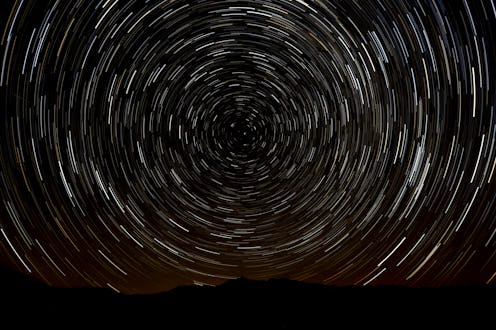News
Here's How To Watch The Perseids Meteor Shower
We're getting close to mid-August, which means it will soon be prime time to watch the Perseid meteor shower hit at its peak. This is a big deal for astronomy fans, who consider the annual event as one of the best natural fireworks displays visible from Earth. But even if you're not normally into space, it'll be worth heading outside to watch the meteor shower on Wednesday or Thursday night, since astronomers predict the sky will be at its darkest and perfect for a light show. (Hint: If you add a bottle of wine and a blanket, this just might be the perfect low-cost date. Just sayin'.)
Every late summer, the Earth's orbit takes us through part of the tail end of the Swift-Tuttle comet. While the actual comet circles the planet every 133 years, we cross the path of dust and debris in its tail annually. The Perseids started streaking across our night sky at the end of July, and the meteor shower is expected to continue through Aug. 26. The Los Angeles Times is reporting that we should be able to see up to 100 shooting stars per hour starting at around 3:00 a.m. PT early Thursday morning and continuing until dawn, when the Earth passes through the thickest part of the comet's tail.
When that dust hits our atmosphere, the result is a light show that NASA considers one of the most vivid on its annual calendar. In fact, NASA nicknamed the Perseid meteor shower the "Fireball Champion" because of the number of shooting stars and how bright they are in the night sky.
This week, not only does the shower hit its natural peak, but we'll be in the newest phase of the lunar cycle, so there won't be any additional moonlight. That's a good thing, according to Robin Scagell, vice president of the Society for Popular Astronomy, who told The Belfast Telegraph why we'll be happy that the moon is out of the way.
[T]he sky will be much darker all night. For every bright shooting star you see there are always fainter ones, and this will make it easier to see the fainter meteors and ring up the numbers. The Perseids are usually fairly bright. Also, they tend to leave a trail, or train, behind them. You can see the train hanging there glowing in the sky for a few seconds — sometimes for several minutes — after the meteor has gone.
According to the Times, the stars (so to speak) haven't been so aligned for a perfect viewing of the Perseids since 2007. So, even those of us without a Hubble telescope at home will find it pretty easy to watch the meteor shower at home. And the best thing (for those of us who have a hard time with astronomy) is that you won't even have to look in any particular direction. No need to worry that you don't know your way around the constellations. Just look up!
But if you don't really have a clear view of the night sky or won't be able to go outside Wednesday or Thursday night, you can still watch nature's fireworks online, thanks to the Slooh Community Observatory's dark-sky live-stream of the meteor shower. Slooh astronomers will start the live broadcast on the night of Aug. 12, so you still have time to line up plans for a little star gazing. Enjoy the show!
